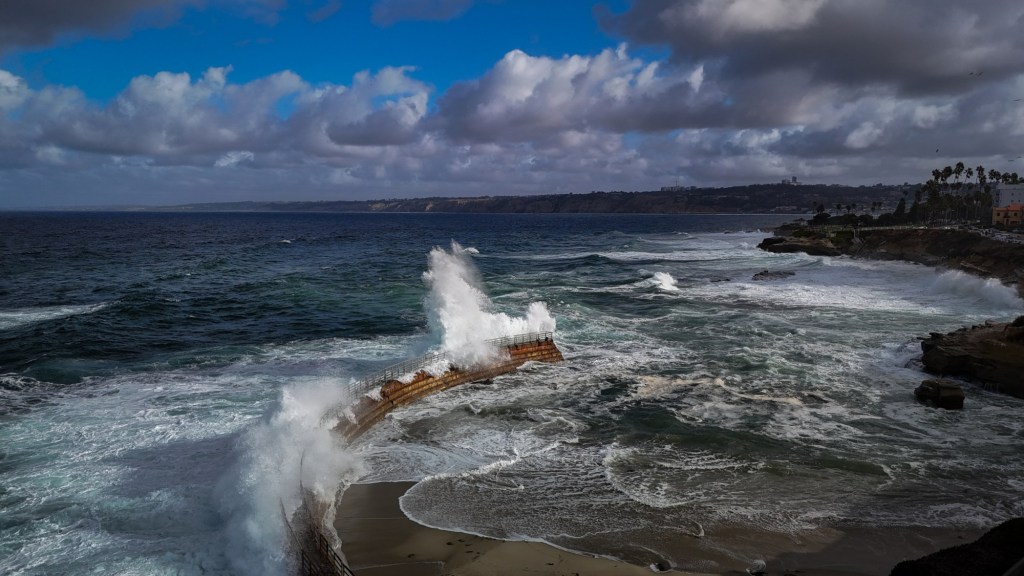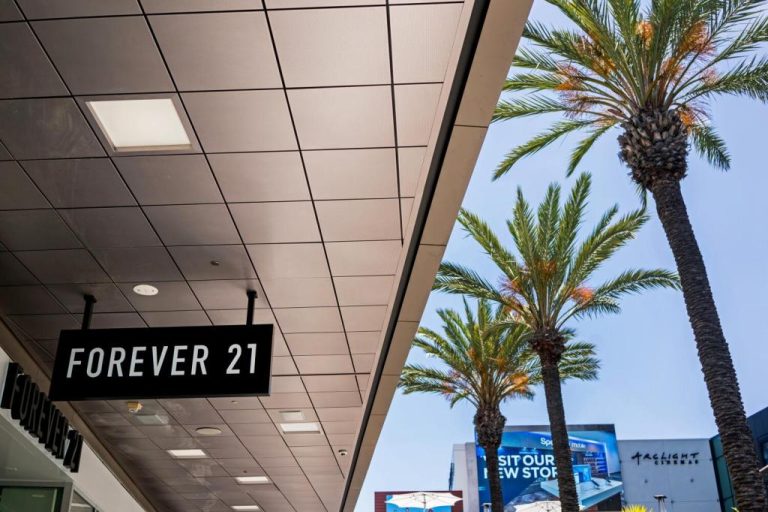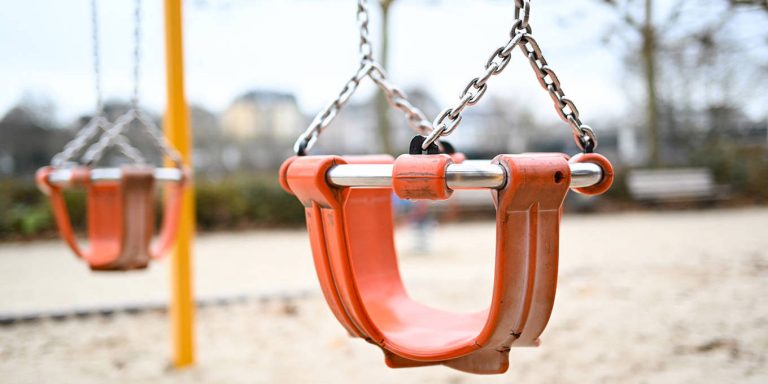
King tides will sweep across San Diego beaches this weekend and a few others over the next few months, sending powerful waves surging against seawalls and making for unusually low tides — prime opportunities to explore tide pools.
The California Coastal Commission is asking the public to photograph the rising tidal waters as part of a project working to document flood and erosion risks in coastal areas.
But as San Diegans flock to the coastline to behold this unique occurrence, one expert is pointing out a couple of misconceptions that come with their royal moniker.
The term “king tides” describes very high tides, but scientists really call them perigean spring tides. They occur when new and full moons — when the sun, Earth and moon are all in a line, a condition known as a spring tide — coincide with the moon being in its closest position to Earth, known as a perigee.
It’s often said that king tides are a winter phenomenon, but these tidal events actually happen three to four times per year.
That’s why oceanographer Reinhard Flick hates the popular term. The way we understand king tides isn’t entirely accurate, he says — they can’t all be the very highest tides.

“There’s all these (tidal) cycles that are different every 4 1/2 years and every 18 years,” said Flick, one of the founders of the Scripps Institution of Oceanography’s Center for Coastal Studies. “So which are the true king tides?”
To him, the term is a misnomer. He gives his students a facetious definition — preferring instead to describe a royal court of tides, with lesser royal titles describing smaller tidal events.
He’s broken king tides into categories, with waves larger than 7.1 feet classified as king — or queen — tides. Tides between 6.8 and 7.1 feet would be considered prince or princess tides, and those below 6.8 feet would be commoner tides.
The highest true king tides of recent years in La Jolla were about 7.2 feet, as high as they get, in July 2022 and August 2023 — both good examples of how the highest tides of the year were not in winter at all, Flick explained.
This weekend, king tides are expected to hit the coast on Saturday and Sunday morning during the fourth and final supermoon of the year.
The National Oceanic and Atmospheric Administration’s tide predictions show high tides expected at just under 7 feet in La Jolla, with the greatest height on Saturday, at 6.95 feet at 8:21 a.m. — a prince tide, if Flick had his way. The heights and times will vary slightly up and down the coast.
Tidal predictions indicate that tides will reach nearly 7 feet again later this winter in December and January, but Flick says they aren’t predicted to reach maximum heights around 7.2 feet again until two summers from now. After this weekend, king tides are expected to return Dec. 13-15.

King tides aren’t a byproduct of climate change, but they offer a glimpse of what our coast may look like as sea-level rises, said Annie Frankel, statewide manager of the California King Tides Project.
The effort, a project of the California Coastal Commission, asks the public to photograph the high tidal waters. The images submitted will then be used to create an interactive map to help researchers document flood and erosion risks on the coast.
“We’re trying to create a visual record of changes to the coast,” she said.
Seas are expected to rise by 1 to 2 feet in the next three to five decades, and when they do, the extreme water levels now only reached during king tides could happen more frequently, experts say.
“An inch or two can make the difference whether a wave is going over the seawall or not,” Flick explained. “The point is that sea level is going to go up. Pretty soon, these peak high tides — whatever you want to call them — are going to start flooding things with or without waves.”
That could spell trouble for coastal communities where a combination of king tides and winter storm surges have caused larger waves and coastal destruction — from bluff collapses to parking lot damage to pillars knocked off the now permanently closed Ocean Beach Pier.

In fact, NOAA’s research suggests that the mild coastal flooding seen once or twice a year today in La Jolla will occur nearly 50 times a year with around 1 foot of sea-level rise.
That’s why the California King Tides Project is asking the public to gather both high- and low-tide video and photos of as many local beaches as possible during king tides this weekend and next month.
The images will not only allow researchers to compare climate change models to reality, but also help the public understand the effect of rising sea levels.
That means some of the most powerful images are taken in areas subject to flooding and erosion, and where water levels can be gauged against familiar landmarks.
“I usually recommend people to think about, ‘Where’s the place along the shoreline that’s important to me, that I care about?’’’ Frankel said.
“These kinds of citizen science projects can be very, very helpful,” Flick added. “They don’t replace science, but they can complement science in a really strong way, not just for the data, but for people to become involved and understand the importance of the research.”

Tips from the experts
— You don’t have to be a professional photographer or have special gear to participate in the California King Tides Project. You can even take photos on your smartphone. Learn more: coastal.ca.gov/kingtides/participate.html
— Be sure to have your phone’s location services on when taking photos. If using a digital camera, please make a note of exactly where you are, so you can mark your photo location on the map when you upload it.
— Timing matters! Consult NOAA tide charts to see the exact times of the highest and lowest tides.
— If participating in the project, take photos as close to high tide as you can, ideally within a half hour — so arrive early.
— However, visiting beaches at least an hour before and after the listed low and high tides will give you optimal results to explore.
— Be safe! Never turn your back on the ocean. Watch high tides from a safe distance ,since the waves can reach new levels and be dangerous if you’re standing too close.
— Take extra precautions when you walk on slippery areas or near big waves.
— Don’t disturb shore birds taking cover above the tide line at high tide.
— Tide pools are best seen during king tide events — but watch your step and leave the creatures alone.
— Don’t forget to upload your photos onto the project’s website. You can also submit photos to Surfrider San Diego’s website.






